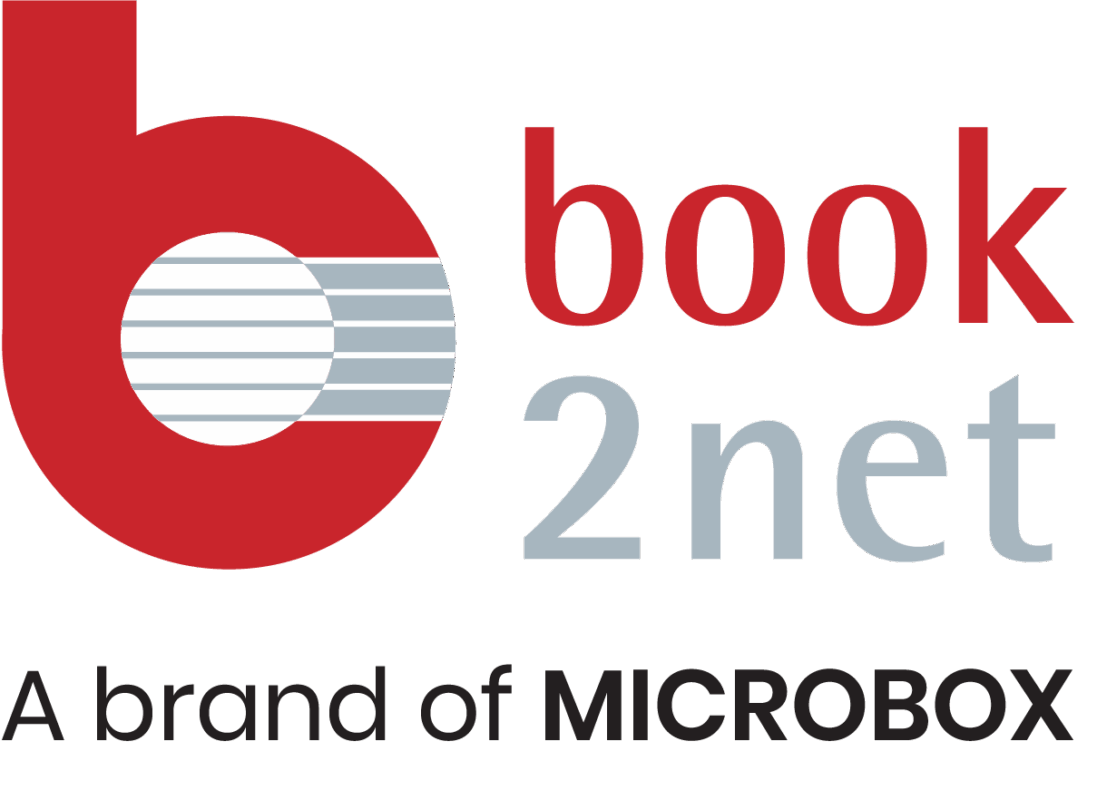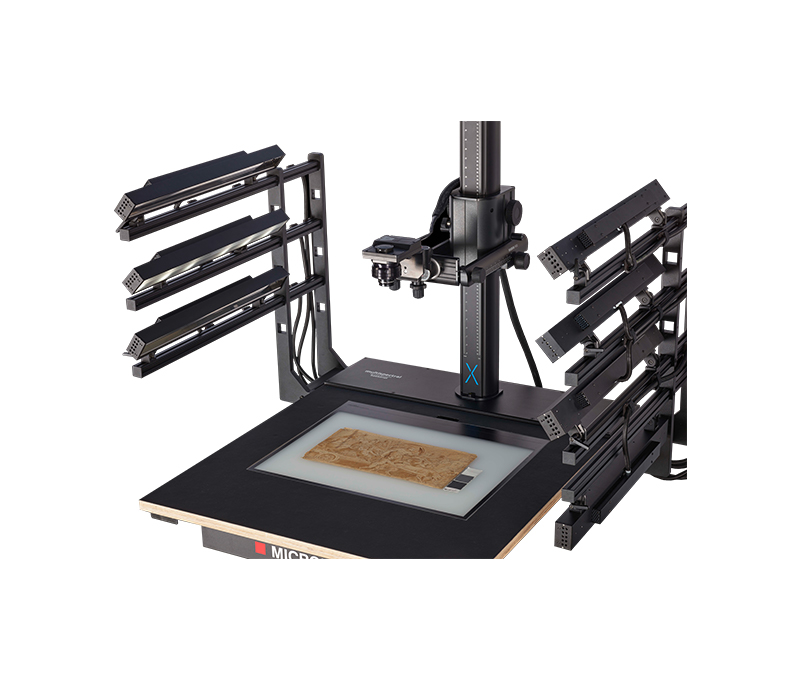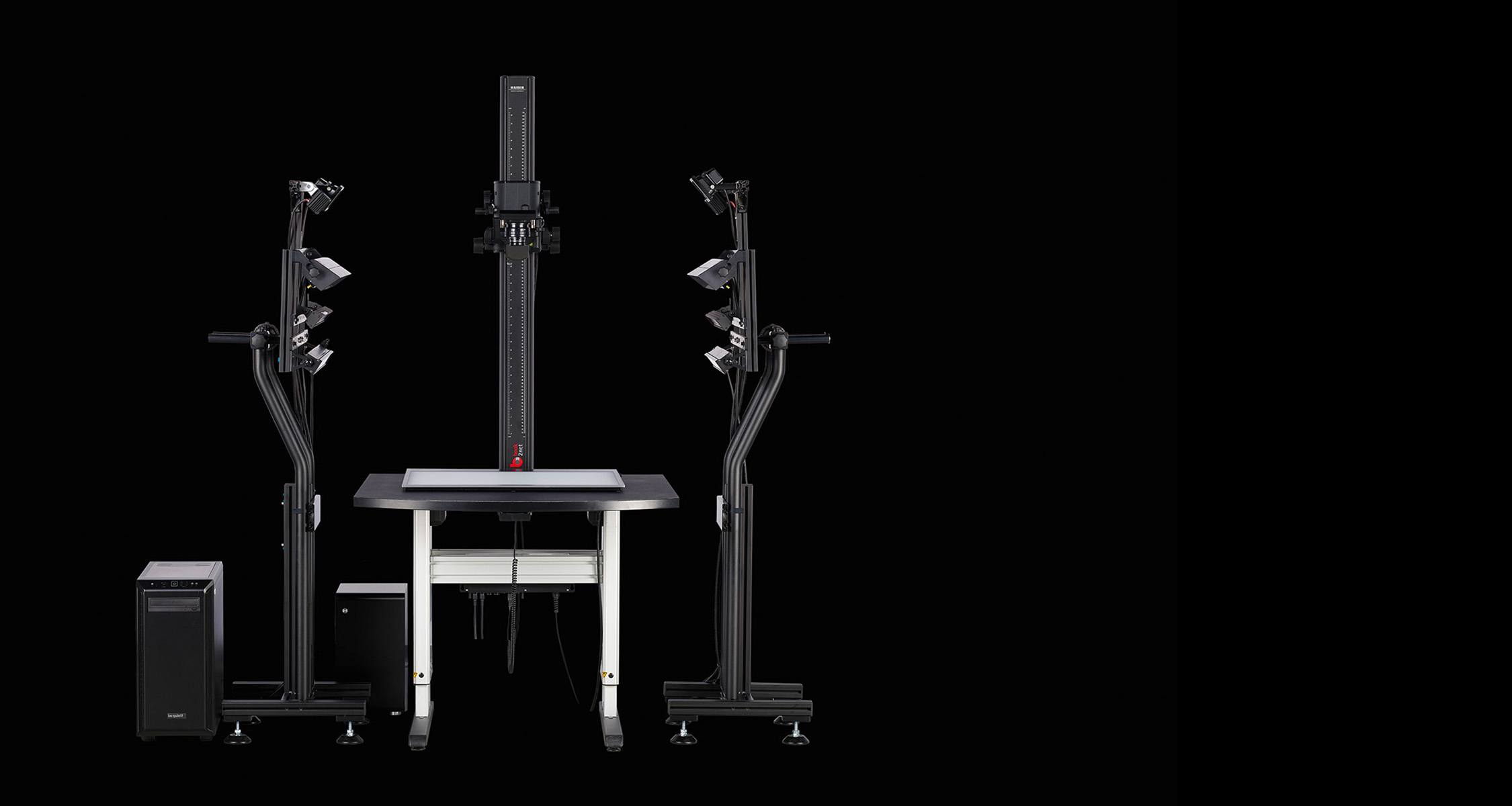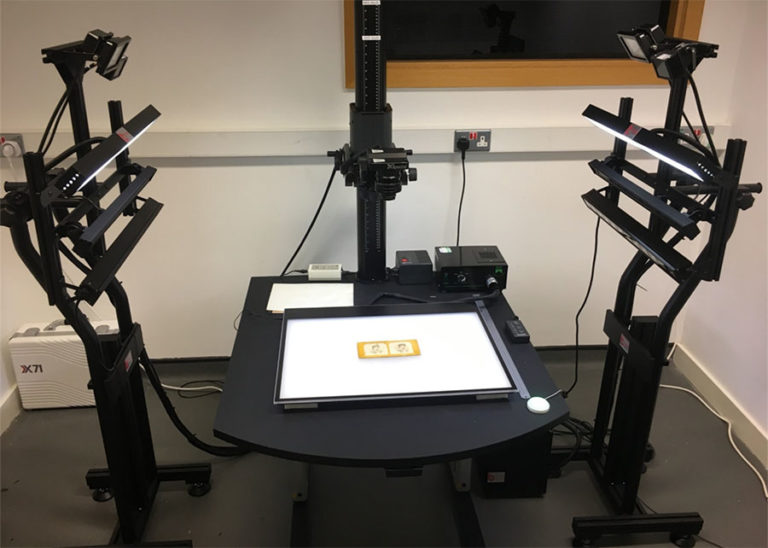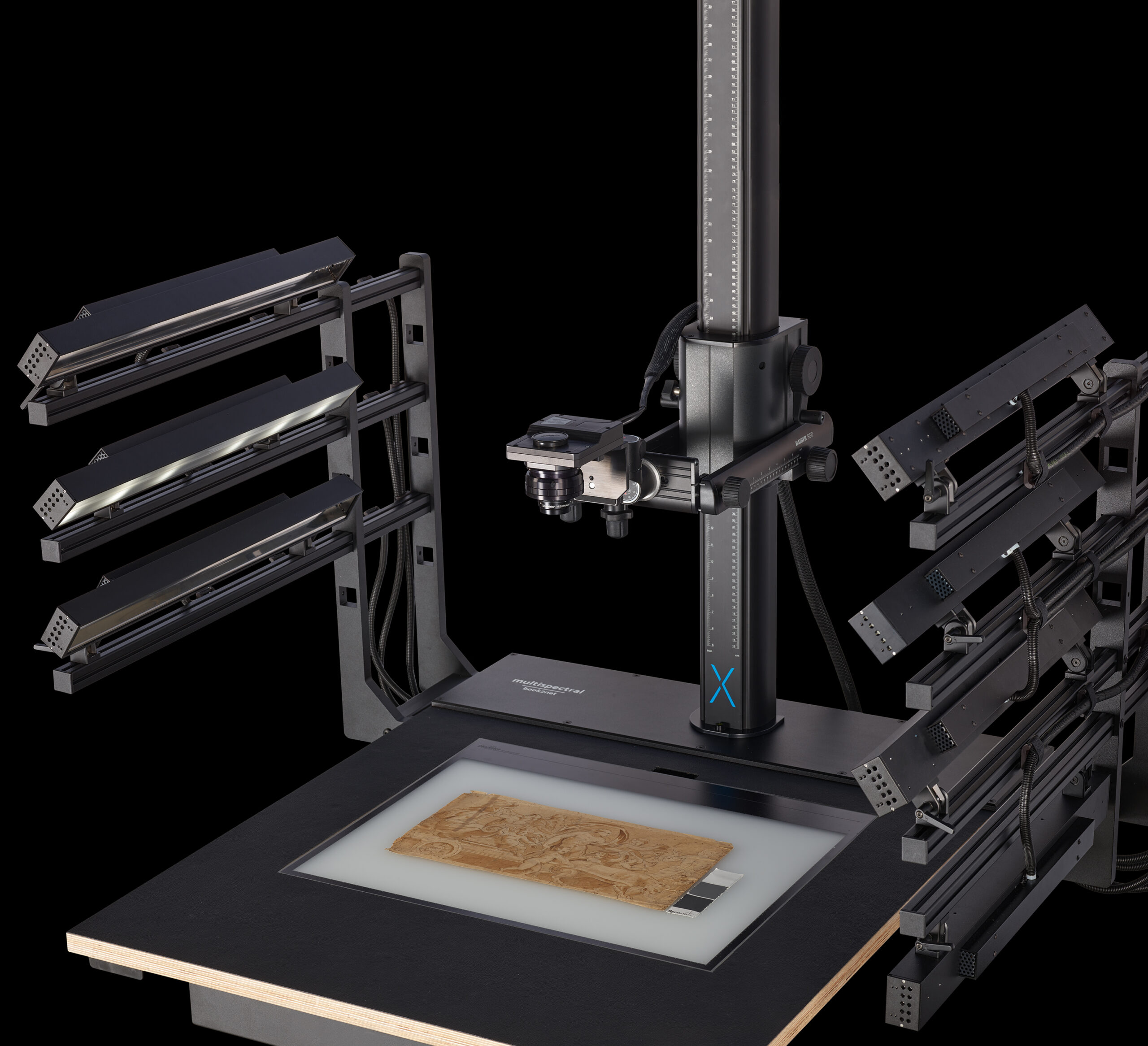
Sistema multispettrale
Innovativo sistema di fotocamera multispettrale per l’analisi scientifica e materico-tecnologica del patrimonio culturale
Analisi senza contatto di disegni, materiali d’archivio e documenti
Se un documento viene scansionato perfettamente, la copia digitale è fedele all’originale fin nei minimi dettagli. Non ci sono aree scarsamente illuminate, né sfocature, né scolorimenti. I prodotti book2net sono sinonimo proprio di questa qualità. Il sistema multispettrale book2net si spinge oltre: si immerge nelle profondità dell’originale e rende visibile ciò che non lo è a occhio nudo.
Oltre a creare un’immagine digitale di alta qualità, questo sistema di digitalizzazione consente di analizzare strutture e materiali. L’uso della luce infrarossa o UV rende visibili aree che altrimenti rimarrebbero nascoste. Si definiscono diverse bande d’onda a seconda di ciò che si vuole rendere visibile.
In questo modo è possibile evidenziare filigrane e strutture della carta, oppure analizzare il materiale utilizzato per scrivere un testo, disegnare uno schizzo o dipingere un’opera d’arte. Anche il foxing, i processi di invecchiamento della carta o i vecchi restauri possono essere resi visibili in modo semplice e veloce grazie alla sofisticata tecnologia del sistema multispettrale book2net.
In questo modo, il sistema non solo adempie alla missione di rendere il patrimonio culturale accessibile senza limiti alle generazioni future attraverso la digitalizzazione, ma è anche una manna per la ricerca. Con un minimo sforzo, i vari “strati” dell’originale possono essere resi visibili a una velocità enorme.
Il software è facile da usare, non lascia nulla a desiderare e dovrebbe piacere a tutti gli utenti. È facile creare più immagini digitali dello stesso originale con scenari di acquisizione diversi, in modo da rendere visibili contemporaneamente aspetti diversi: mentre, ad esempio, un’immagine mette in evidenza la filigrana, un’altra rende visibili le aree restaurate della carta e una terza mostra tutte le aree in cui, ad esempio, è stato utilizzato materiale carbonioso per scrivere o disegnare. Il software consente di sovrapporre queste immagini con precisione al pixel, per così dire sommandole, ma anche sottraendole, per ricerche scientifiche mirate.
Oltre all’analisi dei materiali in sé, il fatto che non sia necessario cambiare i filtri è un particolare punto di forza, perché il sistema funziona senza alcun filtro! Non c’è quindi alcun intervento fisico sul dispositivo, né vibrazioni che possano influire sulla qualità dei risultati dell’analisi. Tutto avviene in modo fluido, rapido e semplice attraverso il software.
Istituzioni rinomate come la Klassik Stiftung Weimar stanno già utilizzando il sistema multispettrale book2net per esaminare scientificamente i loro tesori artistici. Tra questi vi sono disegni di Albrecht Dürer, Leonardo da Vinci, Lucas Cranach e Johann Wolfgang von Goethe. In questo modo, da un lato si mettono al sicuro opere d’arte di valore per il futuro, dall’altro si ottengono nuove informazioni sulle loro condizioni, sulle misure di restauro necessarie, sui processi creativi, sulla paternità e sull’autenticità.
Tutto ciò rende il sistema multispettrale interessante non solo per le scienze culturali di musei, archivi e biblioteche, ma anche come strumento di controllo per altri campi di applicazione, come quello legale e forense.
Caratteristiche MSI
Intro
book2net ha sviluppato un nuovo metodo per l’analisi multispettrale di documenti e disegni. È possibile effettuare scansioni singole o in serie a intervalli di nm definibili. I risultati delle scansioni possono essere sovrapposti e analizzati con precisione al pixel. Il processo di book2net funziona senza cambiare i filtri (quindi senza vibrazioni) e senza post-correzione della nitidezza e della messa a fuoco negli intervalli spettrali (quindi con una precisione al pixel in scala).
Il sistema multispettrale book2net è uno strumento innovativo e non invasivo per le analisi scientifiche e tecnico-materiali, per la medicina legale e per la documentazione completa delle opere d’arte, dei processi di creazione, dell’autenticità o delle condizioni.
Con l’aiuto del nostro sistema, è possibile generare fino a 11 immagini in un’ampia gamma di lunghezze d’onda e le loro combinazioni in pochi secondi con processi completamente automatizzati, a seconda del modello.
Il sistema consente di visualizzare gli inchiostri sbiaditi, i sottodisegni, le combinazioni di materiali utilizzati nella scrittura, nei disegni o nei dipinti, nonché di rilevare le tracce dei processi di invecchiamento organico. Ciò consente di verificare la completezza materiale degli originali e di effettuare analisi dettagliate sull’autenticità.
Sensore ad alte prestazioni
- Tecnologia CMOS COLOR a otturatore globale
- Sviluppo speciale con gamma dinamica molto ampia
- Valutazione analogica e nativa del segnale
- Risoluzione fino a 8200 ppi
Ottica
- Schneider book2net spectral – lente multispettrale UV-IR-VIS da 45 mm
- Schneider book2net spectral – lente multispettrale UV-IR-VIS da 40 mm (opzionale)
Gamma multispettrale
- 365 – 1.100 nm
Scenari di imaging
- Luminescenza ultravioletta (UVL)
- Riflettografia ultravioletta (UVR )
- Immagine VIS in qualità repro
- Fotografia all’infrarosso (940 nm) (NIR)
- Struttura del materiale o della carta con riconoscimento della filigrana
- Immagine UV in falso colore
- Immagine IR in falso colore
- Luce trasmessa
- Luce radente
Software di scansione
- Profiscan MSP & ImageProcess MSP per il controllo ottimale del dispositivo e l’elaborazione delle informazioni
- Processi standardizzati e gestione dei profili con la semplice pressione di un tasto
- Funzione di anteprima
- Visualizzazione sincronizzata di diversi scenari di imaging
Gestione del colore
Gestione integrata del colore reale secondo METAMORFOZE, FADGI, ISO/TS 19264:1 2017, ISO/TS 19264:1 2021, standard ICC per quanto riguarda qualità del colore, risoluzione, rumore e linearità.
Referenze
„Un vero strumento miracoloso“
Jutta Keddies, Responsabile del restauro di disegni, grafica e fotografia
Museo Städel Francoforte sul Meno, Blog Städel, 8 febbraio 2024
al blog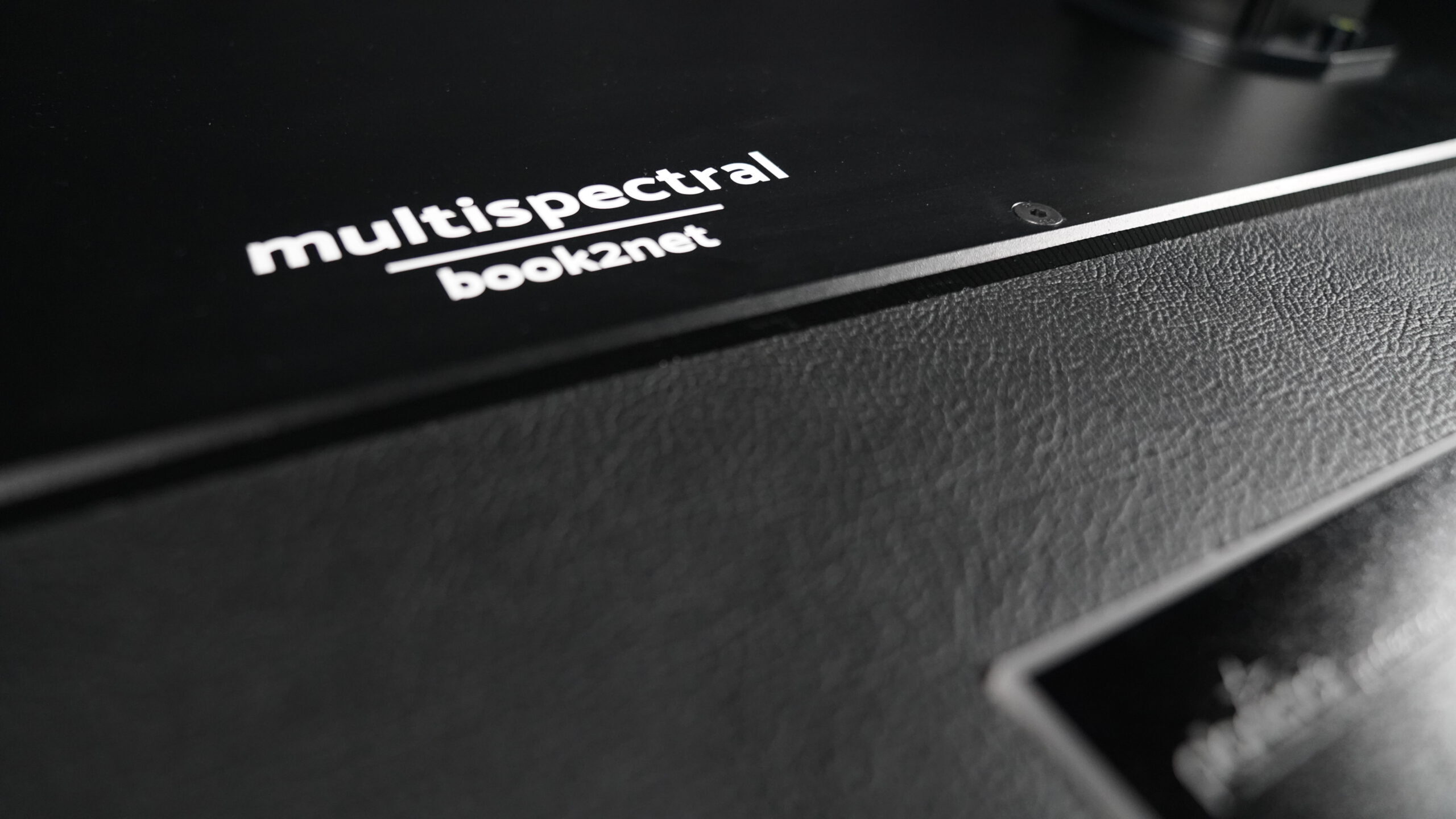
Contattaci
